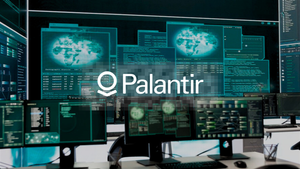
INDIANAPOLIS, IN – November 12, 2025 – Eli Lilly and Company (NYSE: LLY) is experiencing a monumental stock breakout today, sending ripples across the global financial markets. The pharmaceutical behemoth, already a dominant force, has seen its valuation surge on the back of sustained exceptional performance, breakthrough drug developments, and a pipeline brimming with potential. This significant upward movement underscores the company's strategic prowess in pivotal therapeutic areas, particularly in the rapidly expanding fields of obesity and Alzheimer's disease.
The immediate catalyst for today's robust performance appears to be a culmination of recent positive financial reports and strategic advancements that have cemented Lilly's leadership. Investors are reacting with enthusiasm to the company's strong third-quarter 2025 earnings, an optimistic revised full-year guidance, and a series of clinical and regulatory wins for its flagship drugs. This breakout is not merely a transient market fluctuation but rather a clear signal of confidence in Lilly's long-term growth trajectory and its ability to continually innovate and deliver high-value treatments to patients worldwide.
Unpacking the Catalysts: A Series of Strategic Triumphs
Eli Lilly's impressive stock performance is the culmination of several key developments over the past year, painting a picture of a company firing on all cylinders. The narrative is largely dominated by the stellar success of its GLP-1 receptor agonist franchise, Mounjaro and Zepbound (tirzepatide), and the promising advancements in its Alzheimer's portfolio with Kisunla (donanemab).
In October 2025, Eli Lilly announced its third-quarter financial results, reporting an astounding 54% year-over-year revenue increase to $17.60 billion, largely propelled by the explosive sales of Mounjaro for type 2 diabetes and Zepbound for chronic weight management. The company's adjusted earnings per share (EPS) for the quarter soared to $7.02, significantly outperforming analyst expectations. This strong financial showing prompted Lilly to raise its full-year 2025 revenue guidance to an impressive range of $63.0 billion to $63.5 billion and its non-GAAP EPS guidance to $23.00 to $23.70, signaling immense confidence in its continued growth. Earlier in the year, the company had already reported a 45% increase in worldwide revenue for Q4 2024 (February 6, 2025), setting the stage for its current momentum.
Beyond the financials, significant clinical and regulatory milestones have fueled investor optimism. In December 2024, Zepbound received a crucial FDA approval for the treatment of moderate-to-severe obstructive sleep apnea (OSA) in adults with obesity, opening up a substantial new market. Further solidifying its dominance, a head-to-head Phase 3b trial (SURMOUNT-5) against Novo Nordisk's (NYSE: NVO) Wegovy (semaglutide) demonstrated Zepbound's superior efficacy, achieving 47% greater weight loss. The company also made strategic moves to enhance market access, including a collaboration with Walmart (NYSE: WMT) in November 2025 to expand direct-to-consumer pricing for Zepbound and a deal with the U.S. administration to lower prices in exchange for broader Medicare and Medicaid coverage.
In the neurodegeneration space, Kisunla (donanemab), Lilly's Alzheimer's treatment, saw an important label update on July 9, 2025. The FDA approved a new titration dosing schedule, based on the TRAILBLAZER-ALZ 6 study, designed to lower the risk of amyloid-related imaging abnormalities (ARIA-E) while maintaining efficacy. This safety enhancement is crucial for broader physician adoption and patient confidence, with Kisunla already generating $70.1 million in revenue in the first half of 2025. Adding to the excitement is the anticipation surrounding Eli Lilly's oral GLP-1 candidate, orforglipron, which advanced through four additional Phase 3 trials in 2025, with key results expected by April 2025. In September 2025, orforglipron showed greater weight loss compared to oral semaglutide (Rybelsus) in a head-to-head Phase 3 study, positioning it as a potential game-changer.
Market Dynamics: Winners, Losers, and Shifting Landscapes
The profound success of Eli Lilly and Company (NYSE: LLY) in recent months creates distinct winners and losers across the pharmaceutical and healthcare sectors. Unsurprisingly, Eli Lilly itself stands as the primary winner, with its surging stock price directly benefiting shareholders, employees, and its capacity for further investment in research and development. Patients grappling with obesity, type 2 diabetes, and early-stage Alzheimer's disease are also significant beneficiaries, gaining access to highly effective and potentially life-altering treatments. The expanded indications and improved safety profiles of drugs like Zepbound and Kisunla promise better health outcomes and improved quality of life for millions. Furthermore, companies involved in Lilly's expanded manufacturing and distribution networks, such as those contributing to the new Wisconsin facility for orforglipron, stand to gain from increased business and job creation.
On the other side of the ledger, competitors in the fiercely contested GLP-1 market, most notably Novo Nordisk (NYSE: NVO) with its Wegovy and Ozempic, face intensified pressure. While Novo Nordisk remains a formidable player, Lilly's Zepbound has demonstrated superior efficacy in head-to-head trials and is rapidly capturing market share, forcing competitors to innovate or risk losing ground. The entry of an oral GLP-1 like orforglipron, potentially by mid-to-late 2026, could further disrupt the market, posing a significant challenge to existing injectable and oral therapies. Similarly, other pharmaceutical companies developing treatments for Alzheimer's disease face a higher bar for efficacy and safety, as Kisunla's refined label and growing market presence establish a strong benchmark.
The broader healthcare system also experiences a nuanced impact. While the efficacy of Lilly's drugs offers immense benefits, the high cost of these innovative therapies continues to be a subject of debate and negotiation. The deal with the U.S. administration for expanded Medicare and Medicaid coverage, while beneficial for patient access, highlights the ongoing tension between pharmaceutical innovation, pricing, and public health policy. Healthcare providers, however, gain more tools in their arsenal to combat chronic and debilitating diseases, potentially leading to better patient management and reduced long-term healthcare costs associated with untreated conditions.
Wider Significance: Reshaping the Pharmaceutical Frontier
Eli Lilly's current trajectory is not merely about one company's success; it represents a significant inflection point in broader industry trends, with far-reaching implications for pharmaceutical innovation, market competition, and public health policy. The meteoric rise of GLP-1 agonists underscores a paradigm shift in the treatment of metabolic diseases, moving beyond symptomatic management to address underlying physiological mechanisms. This success is spurring a "gold rush" in the development of multi-agonist therapies and oral formulations, pushing the boundaries of what's possible in weight management and diabetes care.
The ripple effects are evident across the industry. Competitors are intensifying their research and development efforts in the metabolic disease space, leading to a crowded pipeline of next-generation GLP-1s and other novel mechanisms. This competitive environment, while challenging for individual companies, ultimately benefits patients by accelerating the pace of innovation and potentially driving down costs over the long term. In neurodegeneration, Kisunla's progress, alongside other amyloid-targeting therapies, signals a cautious but growing optimism that Alzheimer's disease, once considered untreatable, may finally yield to scientific intervention. This encourages further investment in complex neurological disorders, potentially unlocking breakthroughs in areas like Parkinson's and ALS.
Regulatory bodies like the FDA are also adapting to this rapid pace of innovation. The inclusion of orforglipron in the new FDA Commissioner's National Priority Review program suggests a willingness to expedite the review process for truly groundbreaking therapies, particularly those addressing significant unmet medical needs. This could set a precedent for future drug approvals, streamlining the path to market for other innovative treatments. Historically, such concentrated success in specific therapeutic areas has often led to periods of intense M&A activity, as larger players seek to acquire promising early-stage assets or smaller companies with complementary pipelines. Comparisons can be drawn to the advent of statins in the cardiovascular space or biologics in immunology, both of which fundamentally reshaped their respective markets and created new industry leaders.
What Comes Next: Navigating a Future of Innovation and Challenge
The path ahead for Eli Lilly and the broader pharmaceutical market is brimming with both immense opportunities and significant challenges. In the short term, investors will keenly watch the continued sales growth of Zepbound and Mounjaro, which are expected to remain primary revenue drivers. The full commercial rollout and adoption of Kisunla, particularly with its updated label, will also be a key indicator of its long-term market penetration in the Alzheimer's space. Critically, the market awaits the comprehensive Phase 3 results for orforglipron, expected by April 2025, which will be instrumental in shaping its valuation and setting the stage for global regulatory submissions. A potential FDA approval in mid-to-late 2026 for this oral GLP-1 could be another monumental catalyst.
Looking further out, the long-term possibilities for Eli Lilly include the successful launch and market integration of orforglipron, which could revolutionize patient access and adherence to weight management therapies. The progress of retatrutide, its GGG tri-agonist in Phase 3 trials, also holds substantial promise for next-generation metabolic treatments. Strategic pivots may involve continued investment in manufacturing capacity to meet unprecedented demand, further diversification of its pipeline through targeted acquisitions and collaborations, and aggressive global expansion to capture emerging markets. The company's stated ambition to become the world's first trillion-dollar healthcare company underscores its confidence and strategic vision.
However, challenges loom. The competitive landscape in both obesity and Alzheimer's is intensifying, with other pharmaceutical giants pouring resources into these lucrative areas. Pricing pressures, particularly from governments and insurance providers, will remain a constant negotiation point, potentially impacting profitability. Scaling manufacturing to meet global demand for multiple blockbuster drugs is a complex logistical undertaking. Furthermore, the long-term safety and efficacy profiles of these novel therapies will be continuously monitored, with any unexpected findings potentially impacting market perception and regulatory standing. Potential scenarios range from continued exponential growth fueled by pipeline successes to a more moderated growth as competition intensifies and pricing pressures mount.
Comprehensive Wrap-Up: A New Era for Eli Lilly
Eli Lilly's stock breakout today is more than a fleeting market event; it is a powerful affirmation of the company's strategic foresight and scientific prowess. The key takeaways from this period of intense growth center on its unparalleled success in the GLP-1 market with Zepbound and Mounjaro, its significant advancements in Alzheimer's with Kisunla, and a robust pipeline that promises future blockbusters like orforglipron and retatrutide. These achievements have propelled Lilly to the forefront of the pharmaceutical industry, solidifying its position as a leader in addressing some of the world's most pressing health challenges.
Moving forward, the market will undoubtedly view Eli Lilly through the lens of its metabolic and neurodegenerative franchises. The company's ability to sustain its innovation engine, manage manufacturing at scale, and navigate complex pricing and regulatory environments will be critical determinants of its continued success. Investors should closely watch for upcoming clinical trial readouts, particularly for orforglipron, as well as any further expansions of indications for its approved drugs. The competitive responses from rivals like Novo Nordisk will also be a crucial factor in shaping the market dynamics. Ultimately, Eli Lilly's current trajectory suggests a new era for the pharmaceutical giant, one where its scientific breakthroughs are not only transforming patient care but also reshaping the very landscape of global healthcare.
This content is intended for informational purposes only and is not financial advice





